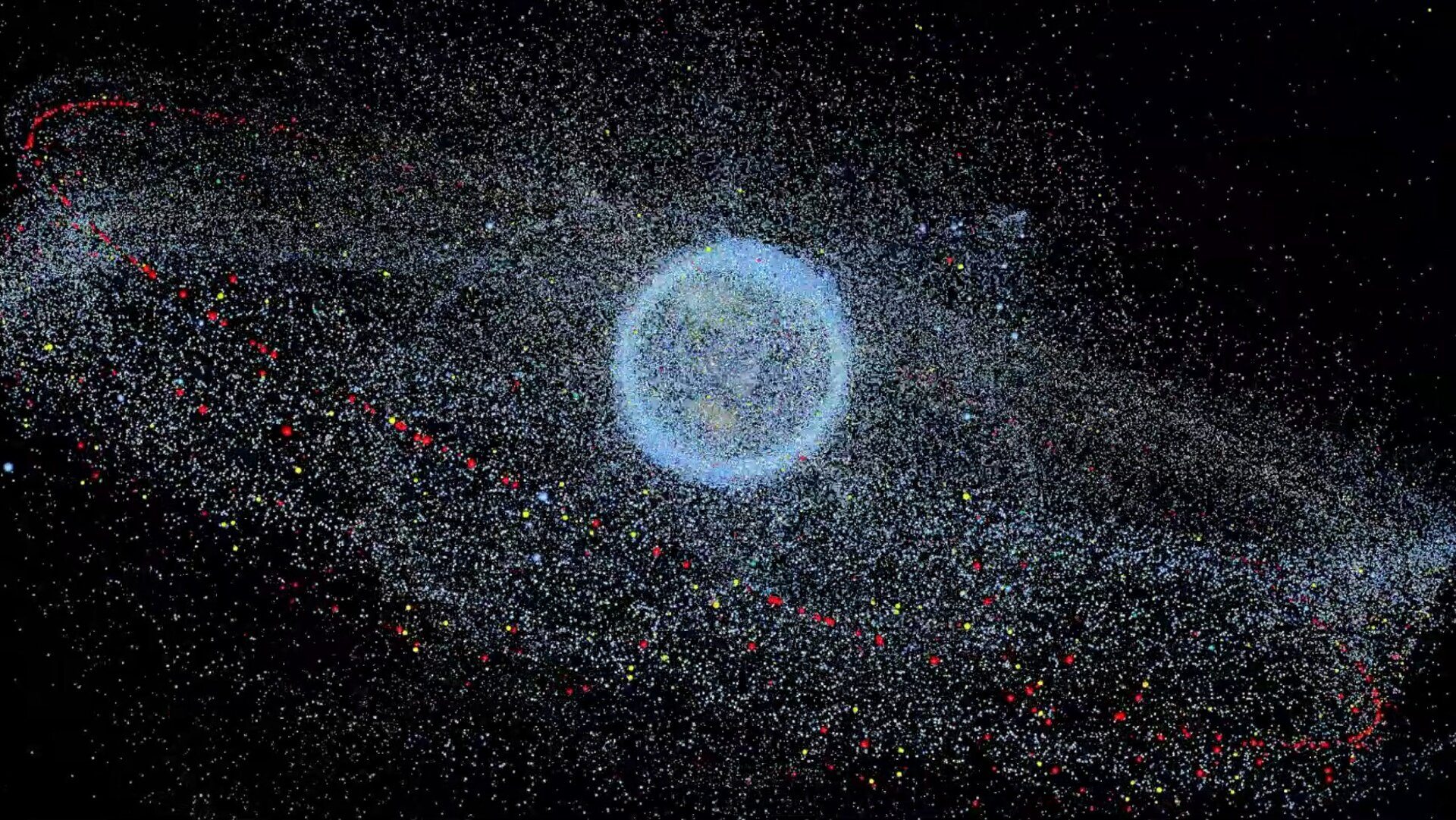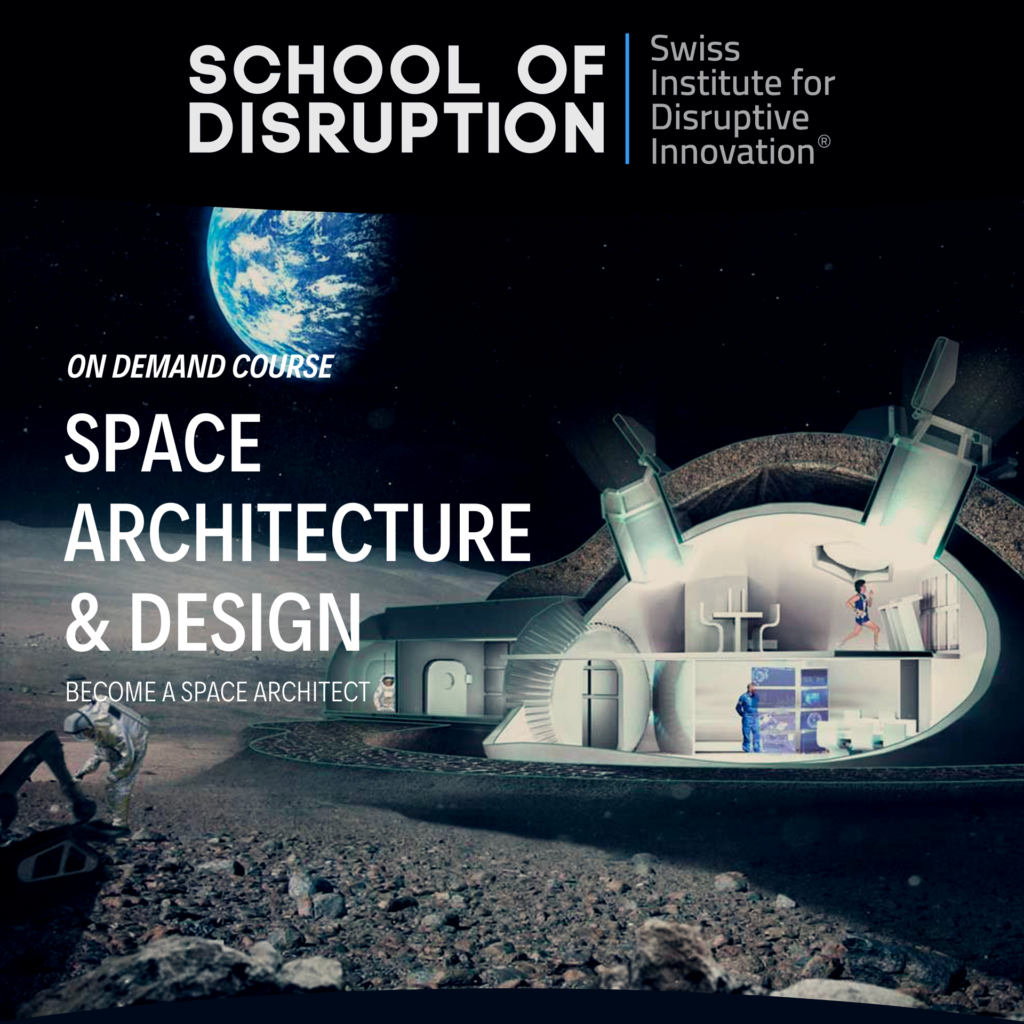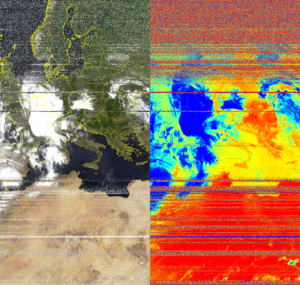The advancement of technology has made mankind achieve numerous events that were initially thought to be impractical. The interplanetary Mars missions from various space organisations have placed a ray of hope for human life expansion on other planets. NASA’s Ingenuity Mars helicopter mission is a recent example of the success of the technical improvements. The usage of space for the development of humanity has gradually increased in the current generation. As every advancement has advantages and disadvantages, the desire to utilise space has posed the problem of Space debris which is a significant burden in the upcoming years that poses a serious threat to humankind.
Space debris, also known as space junk/waste, which is gaining identification as space pollution, is an obsolete human-built object in space, primarily in Earth orbit, that has achieved its purposes and is no longer functional. The source of space debris includes: non-operating spacecraft, discarded launch vehicle stages, mission-related debris, and fragmentation debris from the destruction of derelict rocket bodies and spacecraft. In addition to abandoned artificial objects remaining in orbit, other instances of space debris include pieces from things breakdown, erosion, and impacts, or even paint specks, solidified liquids ejected from spacecraft, and unburned fragments from solid rocket motors.
Earlier, before October 1, 1957, the space was clean and clear, but the launch of Sputnik1 changed the whole scenario. Since then, the space debris keeps accumulating, and now the number has been increased terrifically. As of January 2019, the expected number of debris smaller than 1cm is around 128 million. The count of medium debris (1-9cm) is around 900,000, and larger debris (more than 10cm) is 34,000. The total mass of all the space objects in Earth orbit is currently more than 9300 tonnes (source: https://sdup.esoc.esa.int/discosweb/statistics/ ).
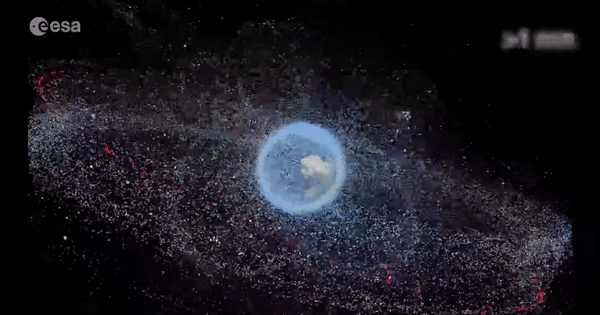
The most significant contributor to the present space debris crisis is explosions in orbit, triggered by excess energy – fuel and batteries – on-board spacecraft and rockets. The low earth orbit (less than 2,000 km) has a high density of satellites, including active and abandoned satellites. With the increase in privatisation, LEO is populated with a large number of sun-synchronous satellites that orbit in many planes, typically up to 15 times a day, causing frequent approaches between objects. The famous 2009 satellite collision, that occurred at 11.7 km/s producing over 2000 larger debris fragments, is the classic example of increased space traffic. Even though high-altitude orbits are less commonly used than LEO, and the beginning of the problem is comparatively slower, the number increases rapidly towards the critical threshold value.
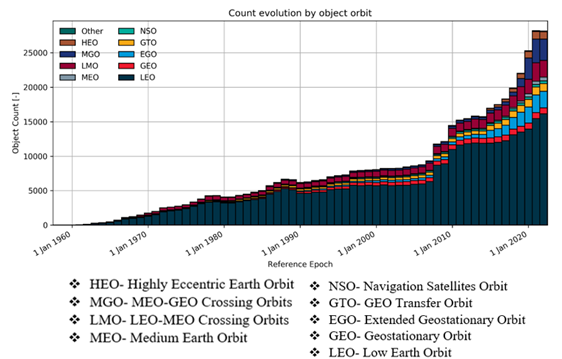
The effect of space debris on spacecraft and the Earth is constantly increasing. An illustrative example, which is the problem experienced by CryoSat-2 spacecraft on July 2, 2019 is considered here. The mission controllers at ESA noticed that a piece of space debris was crashing uncontrollably towards the satellite, which is meant for monitoring ice on the planet and costs around €140 million. As engineers traced the directions of both objects, the possibilities of a collision gradually increased, pushing mission controllers to take action. On July 9, ESA fired the thrusters on CryoSat-2 to lift it into a higher orbit. Just 50 minutes later, the debris hurtled past at 4.1km/s. This type of manoeuvre is becoming more frequent each year as space around Earth becomes progressively more crowded.
Spacecrafts are constantly subjected to risk because of space debris. Satellite operators cannot navigate away from all possible collisions, as each manoeuvre uses time and fuel that could otherwise be utilised for the spacecraft’s essential job. Even minor collisions can create a cloud of plasma which is an electrical risk to the panels. Crewed flights are especially vulnerable to the hazards that space debris conjunctions could present in the spacecraft’s orbital path. A NASA 2005 survey determined that debris accounted for nearly half of the entire risk to the Shuttle.
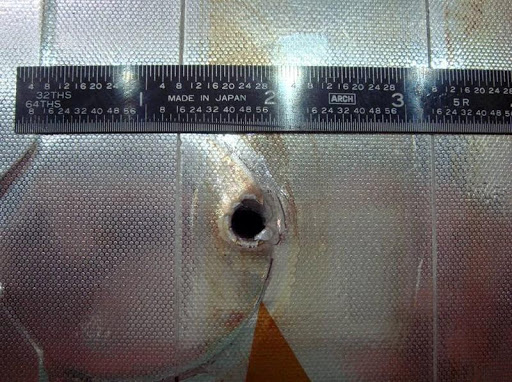
The spacecraft are usually protected by Whipple shields that protect them from minor impacts. The ISS also utilises Whipple shielding to safeguard its interior from small debris. In 1989, the ISS panels were expected to degrade roughly 0.23% in four years due to the sandblasting effect of collisions with tiny orbital debris. As of January 2014, there have been sixteen manoeuvres in the fifteen years performed by the ISS to avoid the debris strike. Though nearly all debris burns up in the atmosphere, bigger debris objects can reach the ground. According to NASA, approximately one classified piece of junk has dropped back to Earth every day for over 50 years. Despite their size, there has been no considerable property damage from the debris.
Space debris is no longer the smaller issue to neglect. In the upcoming years, the effect due to orbital debris is expected to cause more significant problems. There is a lot of research undertaken all around the globe to tackle the issues of space debris.
Let us see the various methods for mitigation in the upcoming article.

